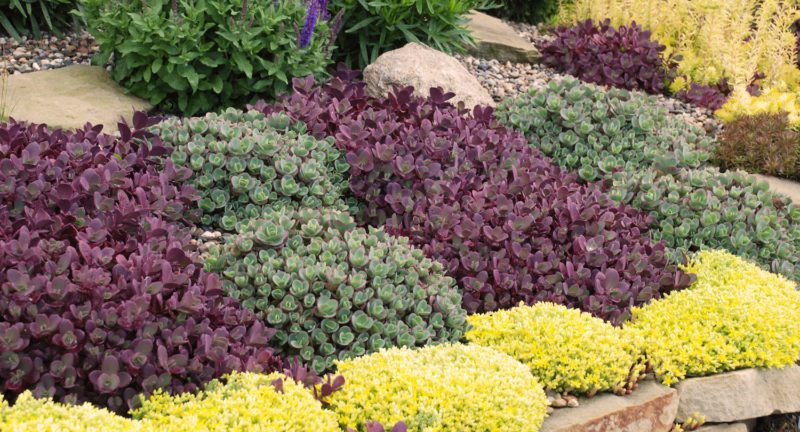
Wise About Water
CAST16 was my fourth year in California working Spring trials for the HGTV HOME Plant Collection. But, this year was decidedly different than all the rest; there had been rain. The drive to and from Los Angeles to Edna Valley Vineyards in San Luis Obispo provided vistas that were actually green and filled with flowers instead of looking brown and dusty. Despite this moment of sweet water reprieve, California and many areas still remain in some level of drought.
At the same time, while I may date myself, I recall when perennials and ornamental grasses started to become the “in thing” and the question for several years was, ‘Is it just a fad?’ or ‘Do you think it’s going to last?’
Perennials obviously aren’t going away and in my opinion neither is the need for plants that tolerate drought conditions. In fact, I think it’s fairly obvious that water wise options will only increase in demand. As Allan Armitage recently said to me, “If you love your garden, then including plants that require less water to look their best simply makes sense. This does not mean ripping out your flowers and replacing everything with cacti and aloes. It means using common sense plant choices to make gardening easier for the end consumer and helping to conserve water.”
However, we need to remember that drought tolerant means plants that survive not necessarily thrive under lack of H20; they will simply tolerate drought. They may not look so hot but won’t die and can bounce back more readily than other plants.
Varieties to Consider
Here are a few choices from myself and my co-horts of what’s hot and new in savvy, water-wise plants:
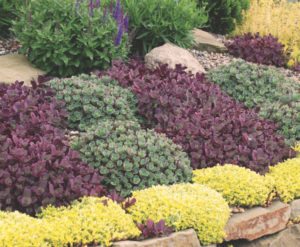
Sedum.
While sedums might be an obvious choice, there are many tangibly different cultivars coming on the market. Breeder Chris Hansen has helped build the wave of sedum popularity by introducing the SunSparkler series. In 2016, he debuted Wildfire, a sport of Firecracker, which is a drought-proof groundcover with small, shiny cherry-red leaves having a hot pink variegation. One of my favorites from Chris is ‘SunSparkler Lime Zinger’. Just as the name indicates, it has small, bright lime green leaves but they also boast a cherry-red edge.
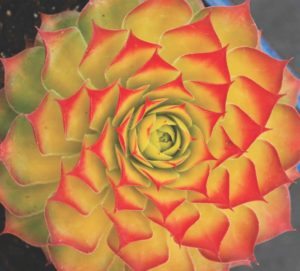
Sempervivum. Now, if you want a fluorescent pop of color, then you’ll go all out crazy for ‘Chick Charms Gold Nugget’. Chris touts it as the world’s first gold-foliaged sempervivum. It joins over 12 different colorful hens and chicks which make up the Chick Charms series.
De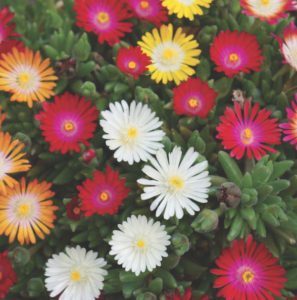 losperma. Perhaps not as well known, another succulent to consider is delosperma or ice plant. The Jewel of Desert series includes nine striking colors to choose from, including Rose Quartz, which happens to be a Pantone color of the year along with Serenity (a light blue). They thrive in full sun, hardly need any water, have colorful daisy-like blooms that continuously flower throughout the growing season and can be treated as an annual in colder zones.
losperma. Perhaps not as well known, another succulent to consider is delosperma or ice plant. The Jewel of Desert series includes nine striking colors to choose from, including Rose Quartz, which happens to be a Pantone color of the year along with Serenity (a light blue). They thrive in full sun, hardly need any water, have colorful daisy-like blooms that continuously flower throughout the growing season and can be treated as an annual in colder zones.
Heuchera. While not a desert plant per se, gardening author Shawna Coronado says that heuchera ‘Champagne’ from Terra Nova Nurseries is surprisingly drought tolerant. She never waters hers once it’s established and feels this particular plant handles excessive heat fairly well. She said, “I search for shade- loving plants for my personal garden that offer color to provide a surprise of light in dark corners. ‘Champagne’ provides beautiful color, healthy vigor, heat tolerance and performs well in my dry clay soil.” ‘Champagne’ is a villosa type which has gold new growth becoming an amber yellow.
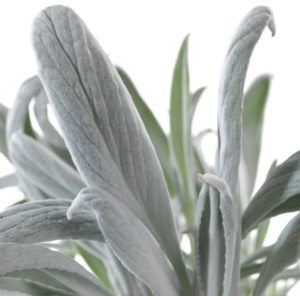 Stachys. Who doesn’t love a plant that just begs to be touched? Enter stachys ‘Bello Grigio’ from Dümmen Orange, also known as ‘Mighty Velvet’ in the HGTV HOME Plant Collection. Again a perennial that will be an annual in some parts of the country, it does not like wet feet at all. Its fuzzy, slender leaves provide a perfect backdrop to highlight bright colored flowers, be it in the ground or a container.
Stachys. Who doesn’t love a plant that just begs to be touched? Enter stachys ‘Bello Grigio’ from Dümmen Orange, also known as ‘Mighty Velvet’ in the HGTV HOME Plant Collection. Again a perennial that will be an annual in some parts of the country, it does not like wet feet at all. Its fuzzy, slender leaves provide a perfect backdrop to highlight bright colored flowers, be it in the ground or a container.
 Lavender. I’ve personally never had much luck with lavender, but I’ve recently added both ‘Phenomenal’ and ‘Big Time Blue’ to my own landscape. Like thyme, the more you water lavender, the worse they’ll look so I guess my tip is to plant and ignore because that’s pretty much what I did and they are both performing extremely well.
Lavender. I’ve personally never had much luck with lavender, but I’ve recently added both ‘Phenomenal’ and ‘Big Time Blue’ to my own landscape. Like thyme, the more you water lavender, the worse they’ll look so I guess my tip is to plant and ignore because that’s pretty much what I did and they are both performing extremely well.
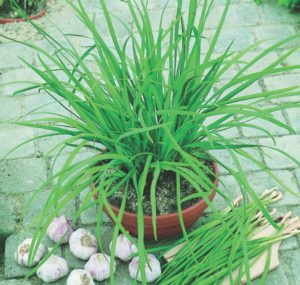 Edibles. Of course when we think of perennials we don’t necessarily think beyond flowers but we could and should! One trending gardening topic is foodscaping: incorporating edible plants into the landscape.
Edibles. Of course when we think of perennials we don’t necessarily think beyond flowers but we could and should! One trending gardening topic is foodscaping: incorporating edible plants into the landscape.
An easy foray into foodscaping is with herbs. Diane Blazek, executive director of All-America Selections suggests two AAS Winners; ‘Cleopatra’ oregano and ‘Geisha’ garlic chives.
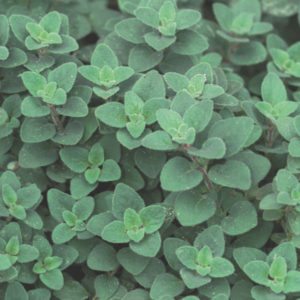
Both of these perennial herbs have dry to normal watering needs and not only provide you with food but pollinators too; ‘Geisha’ is a butterfly magnet and ‘Cleopatra’ is a bee heaven. Oregano makes a nice spreading and trailing mat. With its long strap leaves, the garlic chives can be incorporated as a short grass-like look.
Ascelpias. And while new is hip and cool, there are some plants that never go out of style and hold a higher purpose. So, support and encourage the #polliNATION by considering ascelepias. Butterfly weed tolerates low water conditions and is invaluable as a pollinator. The most drought- tolerant is probably Asclepias tuberosa, but other species will also handle drought conditions well. And being deer resistant doesn’t hurt either.
So go forth, be green and multiply your drought-tolerant perennials.








 Video Library
Video Library 

















